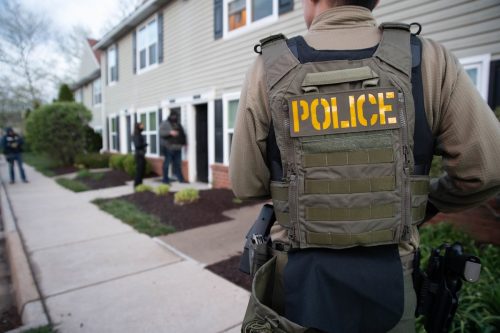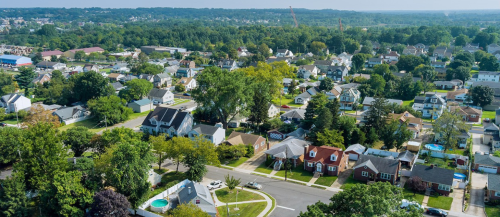Updated 06/22/10
Supporters of Arizona’s harsh new immigration law claim that it is, in part, a crime-fighting measure. For instance, the bill’s author, Republican State Senator Russell Pearce of Mesa, confidently predicts that the law—which requires police to investigate the immigration status of anyone who appears to be unauthorized—will result in “less crime” and “safer neighborhoods.” However, Sen. Pearce overlooks two salient points: crime rates have already been falling in Arizona for years despite the presence of unauthorized immigrants, and a century’s worth of research has demonstrated that immigrants are less likely to commit crimes or be behind bars than the native-born. While much has been made about kidnappings in Arizona, law-enforcement officials indicate that most of these involve drug smugglers and human smugglers, as well as smuggled immigrants themselves—not the general population of the state. Combating crime related to human smuggling requires more trust between immigrants and the police, not less. Yet the undermining of trust between police and the community is precisely what Arizona’s new law accomplishes. In the final analysis, immigration policy is not an effective means of addressing crime because the vast majority of immigrants are not criminals.
Crime rates in Arizona have been falling for years.
- According to data from the U.S. Bureau of Justice Statistics, the rates for both property crime and violent crime (including murder, assault, and rape) have fallen in Arizona in recent years.
- The violent crime rate fell from 545.4 per 100,000 people in 2006 to 481.1 per 100,000 people in 2008, the last year for which data is available {Figure 1}.

- The property crime rate fell from 5,849.8 per 100,000 people in 2002 to 4,087.3 per 100,000 people in 2008 {Figure 2}.

- Rates for aggravated assault and rape in particular have clearly fallen in recent years {Figure 3}.

“High immigration” states have the lowest crime rates.
- According to a 2008 report from the conservative Americas Majority Foundation, crime rates are lowest in states with the highest immigration growth rates, such as Arizona. From 1999 to 2006, the total crime rate declined 13.6 percent in the 19 highest-immigration states (including Arizona), compared to a 7.1 percent decline in the other 32 states.
- As a story in Reason Magazine describes, El Paso, Texas—which is a relatively poor and heavily Latino city that is home to many unauthorized immigrants—is among the safest big cities in the United States, even though it is next door to the violence-ridden Mexican city of Ciudad Juarez.
- A June 2008 report from the Public Policy Institute of California found that foreign-born adults in California have lower incarceration rates than their native-born counterparts. Based on data from 2005, the report found that “the incarceration rate for foreign-born adults is 297 per 100,000 in the population, compared to 813 per 100,000 for U.S.-born adults. The foreign-born, who make up roughly 35% of California’s adult population, constitute 17% of the state prison population, a proportion that has remained fairly constant since 1990.”
Unauthorized immigration is not associated with higher crime rates.
- Although the unauthorized immigrant population doubled to about 12 million from 1994 to 2004, data from the Bureau of Justice Statistics indicates that the violent crime rate in the United States declined by 35.1 percent during this time and the property crime rate fell by 25.0 percent.
- The decline in crime rates was not just national, but also occurred in border cities and other cities with large immigrant populations such as San Diego, El Paso, Los Angeles, New York, Chicago, and Miami.
- A 2007 study by University of California, Irvine, sociologist Rubén G. Rumbaut, found that for every ethnic group, without exception, incarceration rates among young men are lowest for immigrants, even those who are the least educated. This holds true especially for the Mexicans, Salvadorans, and Guatemalans who make up the bulk of the unauthorized population.
- Moreover, “these patterns have been observed consistently over the last three decennial censuses, a period that spans the current era of mass immigration, and recall similar national-level findings reported by three major government commissions during the first three decades of the 20th century. The problem of crime in the United States is not ‘caused’ or even aggravated by immigrants, regardless of their legal status.”
Arizona’s new immigration law only serves to distract police from fighting crime.
- One need look no further than Arizona’s Maricopa County and Sheriff Joe Arpaio for an example of how turning local police into immigration-enforcement agents detracts from actual crime solving. While Maricopa County has diverted resources to immigration enforcement, response times to 911 calls have increased, arrest rates have dropped, and thousands of felony warrants have not been served.



